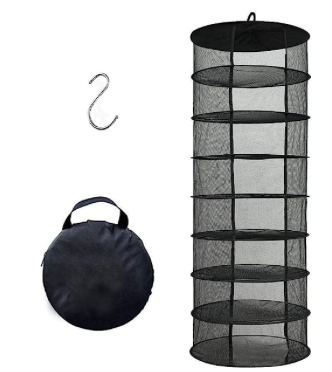In general, to harvest your own seeds, you must choose mature, healthy plants, allow seeds to dry out, and remove the seeds when they are completely dry. However, this process will look different for various fruits and vegetables. In this article, we will go over how to harvest seeds for fruiting plants, root plants, and other vegetables such as lettuce and herbs.
What Are The Basic Steps to Harvest Seeds?
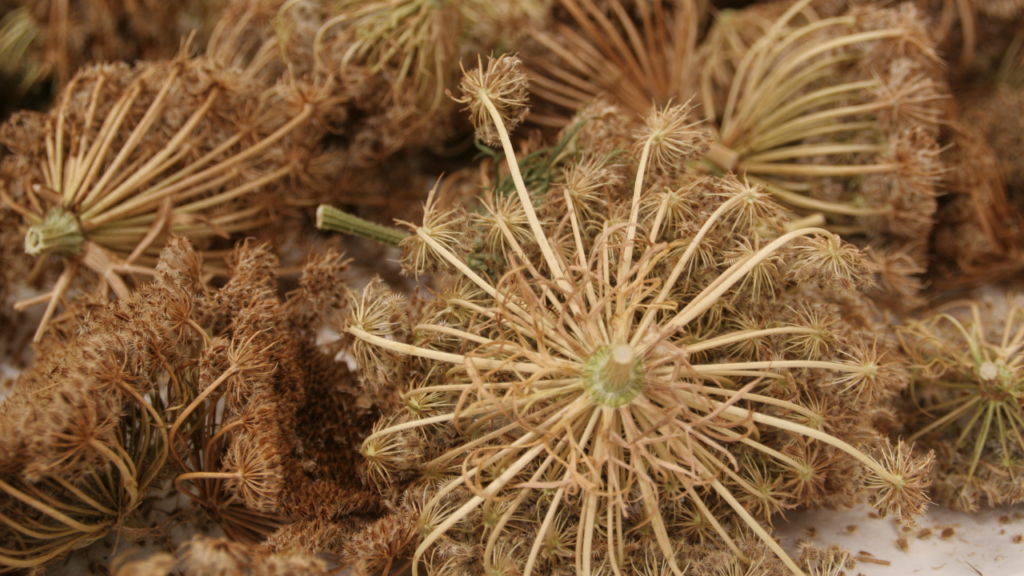
Choose Mature and Healthy Plants
In your garden, wait until your plants are fully mature and healthy before harvesting seeds. It is best practice to select the greatest plants that have produced the most flavorful, productive, and desirable produce. For example, the biggest heads of garlic, the disease resistant tomatoes, the prolific cucumbers, or the spiciest peppers. After your plants have been chosen, you need to let the seeds dry out.
Let the Seeds Dry
Once the fruits or vegetables are ripe, allow them to remain on the plant until the begin to dry out. The seeds inside will be fully developed and ready for harvesting when the fruits or vegetables are completely dry. However, this will look different for various plants. For example, beans and peas may be left on the vine to completely dry before harvesting. Additionally, seed heads from onions, or carrots may be left to dry.
For produce such as tomatoes and cucumbers, the fruit should be removed at the peak of ripeness and the seeds removed. For instance, the tomato may be cut open, and the seeds washed to remove the flesh of the tomato. The seeds will then be left to dry on a flat surface like a paper towel or piece of parchment paper.
Remove the Seeds
When the seeds are dry, remove them from the plant by cutting open the fruit or vegetable and removing the seeds. If the seeds are small, you may need to shake them out into a container. Beans and peas are easy to shell and remove the dried seeds. For larger plants like luffa, the gourd may need to hang on the vine longer to fully dry and will require peeling to remove the fleshy outside.
Clean and Dry the Seeds
Remove any debris or flesh from the seeds and spread them out on a paper towel, or fine mesh screen to dry. You can use equipment like this herb hanger to keep good air flow around your seeds, or you can leave them in a warm dry spot that is well ventilated. A cold damp room, or a warm humid room will prolong the drying process and may cause seeds to spoil due to fungal spores or bacteria that may be present in the environment.
Store the Seeds
After your seeds are harvested, clean, and dry, it is time to store them. Place the seeds in a paper envelope or airtight container like a glass jar. Label them with the plant name, variety, and date of harvesting. Store the seeds in a cool, dry place, like a cabinet, pantry, or refrigerator. It is important to monitor your seeds every year to look for spoilage such as mold or irregular coloring. We like to use this photo box as a way to organize and store our seeds.
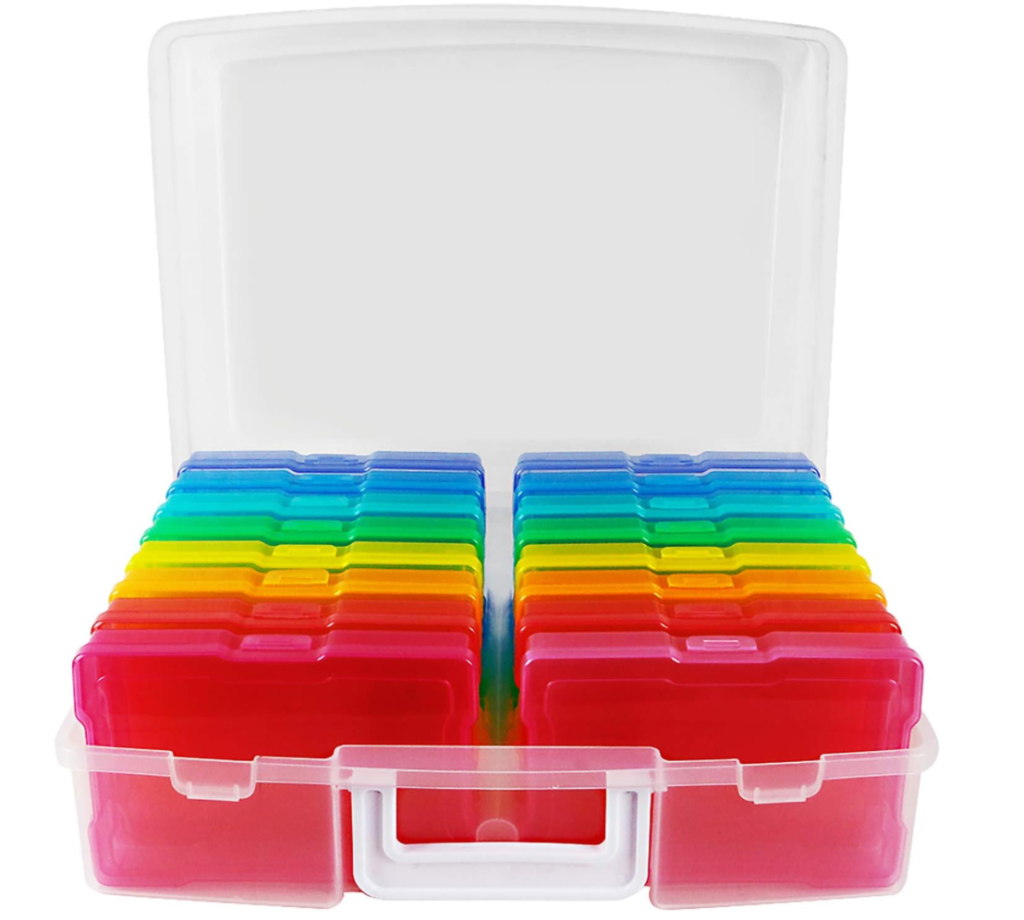
How Long Can I Store My Harvested Seeds?
In general, you can store your harvested seeds for 3+ years. However, the rate of germination will decline with older seeds. Therefore, it is recommended to use the freshest seeds when starting a new season of crops. There are germination tests that you can do at home to test if your seeds are still able to grow.
Germination Test: Take 10 seeds and place them on a damp paper towel. Place damp paper towel and seeds in a sealable bag (like a plastic baggie) and leave in a warm place. Follow the days for germination guide on your seed packet or seed catalog to watch for when the seeds should be sprouting. Keep the paper towel moist and wait for germination. After the average number of days has past, check your seeds. If 5 out of the 10 seeds sprouted, you have a 50% germination rate. Therefore, you will need to plant 2 seeds per plant to get a viable crop.
When Do I Know If My Plant Is Ready To Be Used For Seeds?
Knowing when a plant is ready to be used for seeds depends on the type of plant and the desired outcome of seed production. Generally speaking, a plant is ready to be used for seeds when its flowers or fruits have fully matured and are starting to dry out or wither. This process typically looks like the plant is bolting, flowering, or starting to wither and die back.
For example, if you are growing tomatoes for seed production, you will need to wait until the fruits are fully ripe and the seeds inside have matured. The tomatoes will often be overripe and may even start to rot before they are ready to be used for seeds. To collect the seeds, you will need to remove them from the fruits, rinse them thoroughly to remove any pulp or debris, and then dry them completely before storing them in a cool, dry place.
Similarly, if you are growing plants for their flowers and want to collect seeds for next year’s planting, you will need to wait until the flowers have fully bloomed and the seed pods have started to dry out and turn brown. At this point, you can carefully remove the seed pods and allow them to dry further before collecting the seeds.
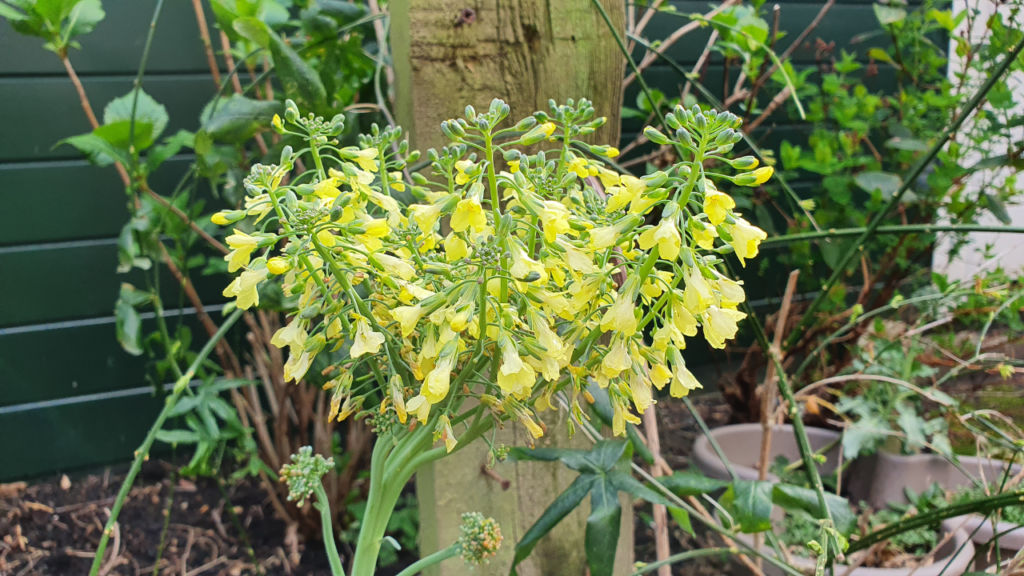
What is Bolting?
Bolting is a term used in gardening and plant biology to describe the premature flowering and seed production of certain plants, typically those that are grown for their leaves, stems, or roots, rather than their flowers or seeds. When a plant bolts, it redirects its energy from vegetative growth to reproductive growth, which can cause the plant to become tall, spindly, and unproductive.
Bolting is often triggered by environmental factors, such as changes in temperature, light, or moisture levels. For example, cool-season crops like lettuce, spinach, and cilantro are particularly prone to bolting when exposed to high temperatures or long days. Similarly, some herbs like basil and parsley may bolt when the days start to get shorter in the fall.
Once a plant has bolted, it can be difficult to reverse the process or prevent it from happening again in the future. However, there are a few steps you can take to minimize the impact of bolting on your crops, such as planting heat-resistant varieties, providing adequate shade or protection from the sun, and harvesting your crops before they bolt.
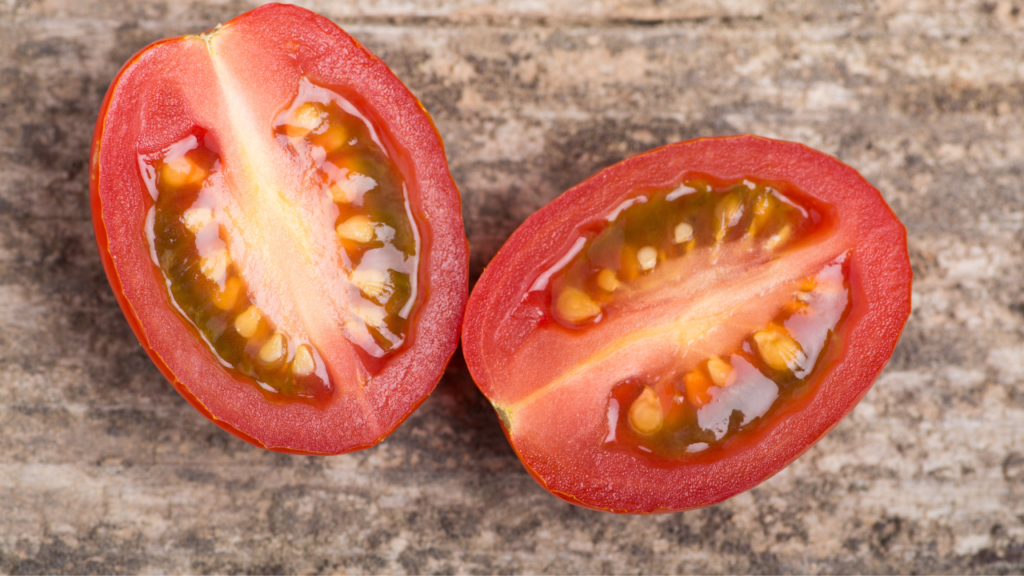
How to Harvest Seeds from Fruiting Plants (tomatoes, cucumbers, etc.)
- Wait for the fruit to fully ripen: The fruit should be fully ripe before you harvest the seeds. This ensures that the seeds inside are mature and viable.
- Cut the fruit open: Use a knife or scissors to cut the fruit open carefully. Be sure to cut it in a way that allows you to easily remove the seeds.
- Remove the seeds: Use your fingers or a spoon to remove the seeds from the fruit. Be gentle and avoid damaging the seeds.
- Clean the seeds: Rinse the seeds in water to remove any pulp or debris. Be sure to dry the seeds thoroughly before storing them.
- Store the seeds: Store the seeds in a cool, dry place. You can use an envelope, a small jar, or a plastic bag for storage. Be sure to label the container with the plant name, the date, and any other relevant information.
Note: Some fruiting plants may require specific harvesting and storage techniques, so it’s a good idea to research the specific plant you’re working with to ensure the best results.
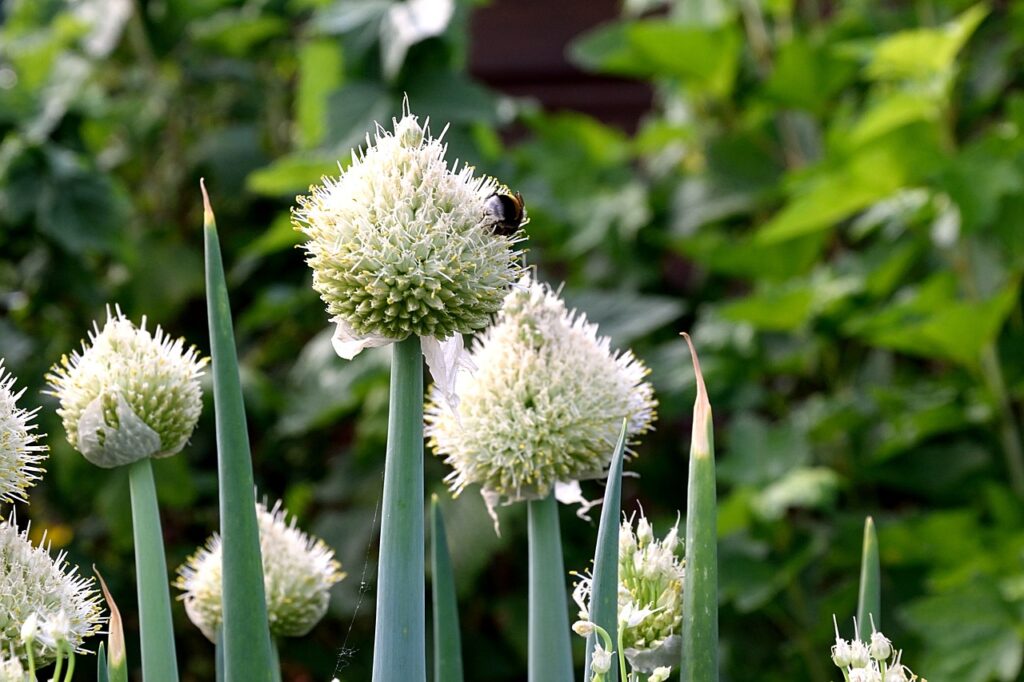
How to Harvest Seeds from Root Crops (carrots, onions, etc.)
Most root crops such as carrots, onions, and leeks are biennial plants. This means they require two growing seasons to complete their life cycle. In the first growing season, the crop will produce an edible root or bulb. In the second growing season, the plant produces a tall flowering stalk that will produce seed. If you wish to harvest seeds from these plants, you will need to let them grow for 2 years until the flower heads form and produce seed. In general, to harvest seeds from root crops follow these steps.
- Overwintering: In the first year, the plant stores energy in its root system over the winter.
- Vegetative growth: In the second year, the plant will begin vegetative growth again, producing leaves and a stem.
- Bolting: At some point in the second year, the plant will begin to produce a tall, flowering stalk. This is called “bolting.”
- Flowering: Once the stalk reaches a certain height, it will produce clusters of flowers.
- Pollination: In order for the flowers to produce seeds, they need to be pollinated. This can be done by insects, such as bees or butterflies.
- Seed production: After pollination, the flowers will begin to produce seeds. The seeds will form in a cluster, called an “umbel,” at the top of the stalk.
- Seed harvesting: When the seeds have fully matured, they can be harvested by cutting off the seed heads and allowing them to dry. Once the seeds are dry, they can be removed from the seed head and stored for future use.
Note: Some root crops may require specific harvesting and storage techniques, so it’s a good idea to research the specific plant you’re working with to ensure the best results.

How to Harvest Seeds from Lettuce or Herbs (romaine, basil, etc.)
In general, lettuces are annual plants, and herbs are annual or perennial. Annual plants complete their life cycle in the first growing season. The plant produces and then dies. Perennial plants continue to reproduce year after year. However, herbs may act like a perennial but are actually an annual.
For example, lemon balm is an annual herb, but it is good at “self-seeding.” Self-seeding is the act of seeds being produced by the annual plant and resowing themselves in the soil they already grow in. Regardless, seeds may be collected very similarly for both lettuces and herbs.
- Vegetative growth: In the early stages of growth, the plant focuses on producing leaves. During this time, the plant is using energy to build up its root system and produce the edible aerial parts.
- Bolting: As temperatures rise and days get longer, the plants will begin to shift their energy towards producing a tall, flowering stalk. This is known as bolting.
- Flowering: Once the plant has bolted, it will produce small, flowers at the top of the stalk.
- Pollination: In order for the flowers to produce seeds, they need to be pollinated. This can be done by insects, such as bees or butterflies.
- Seed production: After pollination, the flowers will begin to produce seeds. The seeds will form in small pods, which are attached to the stem below the flowers.
- Seed harvesting: When the seeds have fully matured, they can be harvested by cutting off the seed pods and allowing them to dry. Once the seeds are dry, they can be removed from the pods and stored for future use.
Note: Some lettuces and herbs may require specific harvesting and storage techniques, so it’s a good idea to research the specific plant you’re working with to ensure the best results.
Overall, it is very beneficial to harvest your own seeds. For more about harvesting seeds read our article about Buying Seeds or Harvesting them.
Recent Posts
A guide on how to store and organize seeds for your garden. Vegetables, flowers, herbs, or anything you are wanting to grow. How to Store Your Seeds Proper storage of garden seeds is essential...
Gardening questions may not have direct answers because gardening is a complex and multifaceted subject. There are many factors that can influence the success of a garden, including soil type,...

